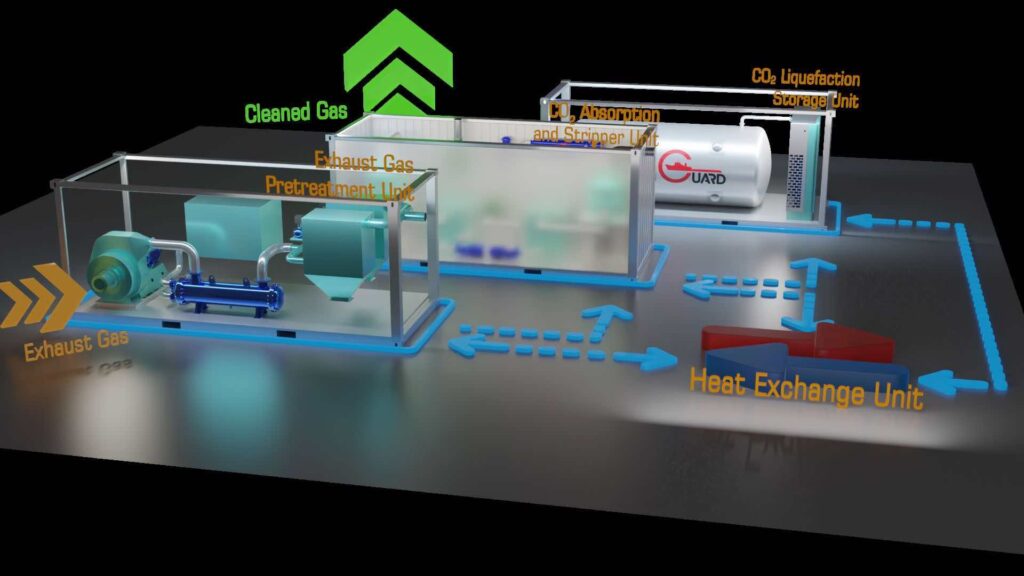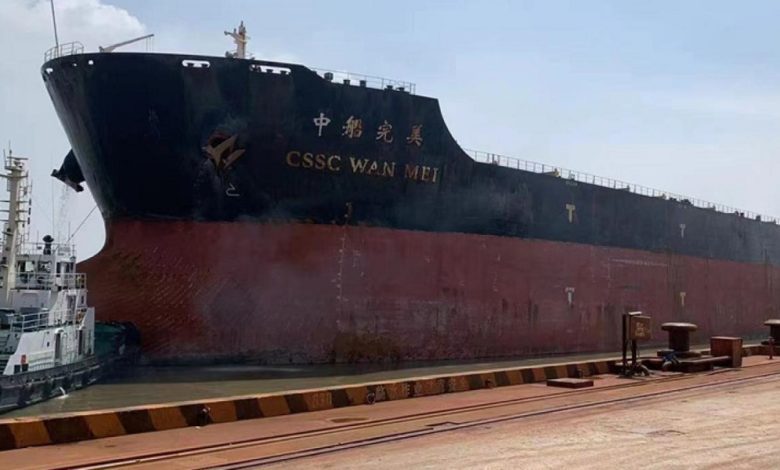28 November 2024
New requirements for onboard carbon capture

The classification society, American Bureau of Shipping has released a set of requirements to guide the industry in the application of carbon capture technology at sea.
Concept
Working with shipyards, ship owners, and operators, ABS has developed an industry-leading set of requirements. for onboard carbon capture. Therefore, guiding the industry in the application of carbon capture technology at sea. Note that, the rules focus on wet scrubbing post-combustion technologies.
“Carbon capture could be a key transformational technology for shipping to achieve net-zero emissions by 2050. The requirements we have developed are a key step toward harnessing the potential of carbon capture to tackle the challenge of the energy transition for our industry,”
Georgios Plevrakis, ABS Vice President, Global Sustainability.

Headway CCS (Carbon Capture System) gets DNV AiP
The Carbon Capture and Storage system (CCS) from Headway is one of the few that have received Approval in Principle from DNV.
Ship Nerd
Criteria
The ABS criteria intend to apply to EEA equipment, including;
- SOx scrubbers
- Selective Catalytic Reduction (SCR) units
- Exhaust Gas Recirculation (EGR) systems
- Exhaust Emissions Monitoring Systems (EEMS).
According to the classification society, the document has been developed to provide guidance for the design, construction, installation, and survey of machinery, equipment, and systems for vessels and offshore units with Onboard Carbon Capture and Storage (OCCS) equipment.
The requirements also include an optional ready notation for vessels based on their level of preparation, or readiness, for future OCCS installations.
With the ever-stricter regulations emerging, OCC is likely to play a role as a bridging solution for vessels that exhaust the potential of energy efficiency initiatives but are yet unable to switch to alternative fuels amid limited availability or other challenges.
Based on the recent findings from Mærsk Mc-Kinney Møller Center for Zero Carbon Shipping, tankers allow for easier integration (with CO2 tanks on deck) and minimal impact on cargo capacity. Bulk carriers and container vessels present more integration challenges that can lead to significant cargo loss. Ship integration and cost impacts become larger for smaller vessels, so large tankers provide the best business case.
Various companies are looking into the technology. However, there are numerous barriers to ships using OCC. These include inadequate port reception infrastructure, low efficiency of the technology as well as its size, and high energy consumption.
Source: ABS
See Also

Feasibility Study: Installing Carbon Capture & Storage
BV, Wah Kwong and Qiyao will study the feasibility of installing carbon capture and storage units on existing ships for 2030 CII targets.


